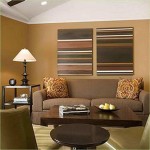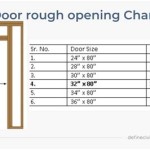Wages for Interior Designers: A Comprehensive Overview
The interior design profession encompasses a wide range of activities, from initial client consultations to final project installations. Consequently, the wages for interior designers can vary significantly based on numerous factors, including experience, education, skillset, location, specialization, and the type of employer. Understanding these factors is crucial for both aspiring and established interior designers seeking to negotiate fair compensation and plan their career trajectories.
This article provides a comprehensive overview of the prevailing wage landscape for interior designers, exploring the key elements that influence earning potential and offering insights into industry trends.
Experience and Education: The Foundation of Earning Potential
Experience and education are foundational elements in determining an interior designer's earning potential. Entry-level positions, often requiring a bachelor's degree in interior design or a related field, typically command lower salaries compared to positions that demand several years of professional experience. A strong educational background provides a solid understanding of design principles, building codes, accessibility standards, and sustainable practices, equipping graduates with the necessary skills to enter the workforce. However, practical experience gained through internships, assistant roles, and project management opportunities significantly enhances an individual's value to potential employers.
As designers accumulate experience, their ability to manage complex projects, build client relationships, and demonstrate a proven track record of successful design solutions allows them to command higher salaries. Senior-level designers, often possessing advanced certifications or specialized expertise, are frequently entrusted with leading large-scale projects and mentoring junior staff, further justifying their higher compensation. Advanced degrees, such as a Master's in Interior Design or a related field, can also contribute to increased earning potential, particularly for those seeking academic or research-oriented positions.
Certifications are also crucial. Organizations like the National Council for Interior Design Qualification (NCIDQ) offer certifications that demonstrate a designer's competency and adherence to professional standards. Obtaining and maintaining such certifications can significantly enhance credibility and marketability, leading to improved salary prospects.
Geographic Location: The Impact of Cost of Living and Market Demand
Geographic location plays a significant role in determining the wages for interior designers. Metropolitan areas with a high cost of living, such as New York City, San Francisco, and Los Angeles, typically offer higher salaries to compensate for the increased expenses associated with living and working in these regions. Conversely, areas with a lower cost of living may offer lower salaries, although the overall purchasing power of the designer may remain comparable due to reduced living expenses.
Furthermore, the demand for interior design services can vary significantly across different geographic locations. Regions experiencing rapid economic growth or a surge in construction activity may witness increased demand for interior designers, leading to higher salaries and more abundant job opportunities. Conversely, areas with a stagnant or declining economy may experience reduced demand, potentially impacting salary levels and job availability. The presence of a thriving design community or a concentration of architecture and design firms can also influence the competitive landscape and overall wage levels in a particular region.
Specific sectors thriving in certain locations can also drive up wages for specialized designers. For instance, designers with expertise in hospitality design may find better-paying opportunities in cities with a strong tourism industry, while those specializing in healthcare design may be in higher demand in areas with a growing healthcare sector.
Specialization and Skillset: Carving a Niche for Higher Earnings
Within the field of interior design, specialization can significantly impact earning potential. Interior designers may choose to specialize in various areas, such as residential design, commercial design, hospitality design, healthcare design, sustainable design, or kitchen and bath design. Certain specializations, particularly those requiring advanced knowledge or specialized skills, often command higher salaries. For instance, designers specializing in healthcare design must possess a thorough understanding of building codes, safety regulations, and accessibility standards specific to healthcare facilities, justifying their higher compensation.
In addition to specialization, specific skills can also enhance an interior designer's earning potential. Proficiency in various software programs, such as AutoCAD, Revit, SketchUp, and Adobe Creative Suite, is highly valued by employers. Strong communication skills, presentation skills, and project management skills are also essential for success in the field and can contribute to higher salaries. The ability to create photorealistic renderings, develop detailed construction documents, and manage budgets effectively are all highly sought-after skills that can differentiate a designer from the competition and command premium compensation.
Staying abreast of industry trends and emerging technologies is also crucial for maintaining a competitive edge and maximizing earning potential. Interior designers who embrace new technologies, such as virtual reality (VR) and augmented reality (AR), and incorporate sustainable design principles into their work are often highly sought after by employers seeking innovative and forward-thinking design solutions.
Employer Type and Company Size: Navigating Different Compensation Structures
The type of employer and the size of the company can also influence an interior designer's wages. Interior designers may work for various types of organizations, including architecture firms, interior design firms, construction companies, retail establishments, or government agencies. Large architecture firms and interior design firms often offer more competitive salaries and benefits packages compared to smaller firms or independent practices. However, smaller firms may offer more opportunities for professional growth and exposure to a wider range of projects.
Companies operating in high-end markets or serving affluent clientele may also offer higher salaries to attract and retain top talent. Luxury residential design firms, for instance, may offer premium compensation to designers with a proven track record of creating high-end residential spaces. The financial stability and reputation of the employer can also impact salary levels, with established and well-regarded firms often offering more competitive compensation packages.
Independent interior designers or freelancers typically have more control over their earning potential but also bear the responsibility for managing their own business expenses and securing clients. While the potential for earning a higher income exists in self-employment, it also requires strong business acumen, marketing skills, and financial management capabilities. They often set their rates based on project scope, time commitment, and market demand.
Negotiating Salaries and Benefits: Securing Fair Compensation
Negotiating salaries and benefits is a crucial aspect of securing fair compensation as an interior designer. Before entering negotiations, it is essential to research industry standards, understand your own value and contributions, and be prepared to articulate your skills and experience effectively. Utilizing online resources, such as salary surveys and industry reports, can provide valuable insights into the prevailing wage rates for similar positions in your geographic location and specialization.
During negotiations, be prepared to discuss your accomplishments, quantifiable results, and unique skills that differentiate you from other candidates. Highlight your ability to generate revenue, improve efficiency, or enhance client satisfaction. Demonstrating a clear understanding of the company's goals and objectives can also strengthen your position and justify your salary expectations.
In addition to salary, consider negotiating other benefits, such as health insurance, retirement plans, paid time off, professional development opportunities, and flexible work arrangements. These benefits can significantly impact your overall compensation package and contribute to job satisfaction. Be prepared to weigh the value of these benefits and negotiate accordingly to achieve a compensation package that meets your individual needs and financial goals. Understanding the full scope of the compensation package beyond just the base salary is crucial for making informed decisions about job offers.
It's also important to be aware of your worth based on your experience and skills in the specific region. A junior designer in a major metropolitan area should research entry-level salaries and consider their portfolio and qualifications when discussing compensation.
Industry Trends and Future Outlook: Adapting to a Changing Landscape
The interior design industry is constantly evolving, influenced by technological advancements, changing consumer preferences, and sustainability concerns. Staying abreast of these trends is crucial for interior designers seeking to maintain a competitive edge and maximize their earning potential. The increasing adoption of Building Information Modeling (BIM) and other 3D modeling software is transforming the design process, requiring designers to develop proficiency in these technologies. The growing emphasis on sustainable design and green building practices is also creating new opportunities for designers with expertise in environmentally friendly materials and energy-efficient design solutions.
Furthermore, the rise of e-commerce and online design platforms is changing the way clients engage with interior design services. Designers who can leverage digital marketing strategies, develop online portfolios, and offer virtual design consultations are well-positioned to thrive in this evolving landscape. The ability to adapt to new technologies, embrace sustainable practices, and cater to the changing needs of clients will be essential for interior designers seeking to achieve long-term success and maximize their earning potential.
The increasing use of virtual and augmented reality for client presentations will likely become standard practice, demanding that designers familiarize themselves with these tools to effectively communicate their visions.
The demand for personalized and experiential design is also growing, requiring designers to develop a deep understanding of client needs and preferences. Those who can create unique and memorable spaces that enhance the user experience will be highly sought after.

Interior Designers

Interior Designers

How To Become An Interior Designer Career Sidekick

Interior Designers

Careers In Interior Design The Ultimate Guide Nyiad

Sw271025 Png

What Are The Wages And Benefits Vancouver Public Library

2024 Rising Giants Fees And Salaries Interior Design

Interior Designers

Asid 2024 State Of Interior Design Report
Related Posts








